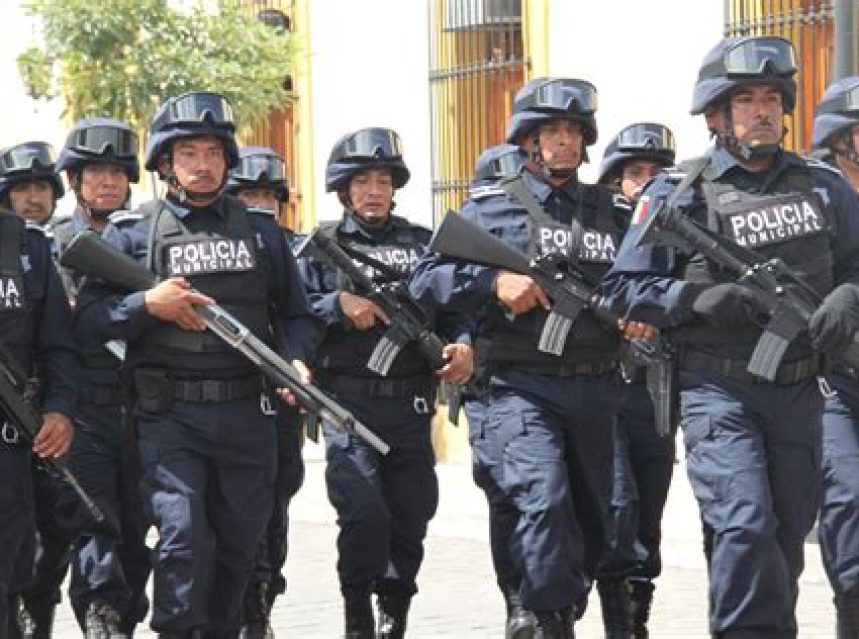Mexican Police Uniform

Welcome to our blog post on the captivating world of Mexican police uniforms. In this article, we will explore the intriguing history of these uniforms, highlighting their traditional elements and how they have evolved over time. We will delve into the significance of distinguishing features in Mexican police uniforms and discuss the modern trends in their design. Join us on this fascinating journey as we uncover the story behind the iconic attires that symbolize law and order in Mexico.
History of Mexican police uniforms
When it comes to the evolution of police uniforms, Mexico has a rich and intriguing history. Mexican police uniforms have gone through significant changes over time, influenced by various factors such as cultural traditions, historical events, and modern trends in fashion and design.
1. Traditional elements of Mexican police uniforms:
Mexican police uniforms are known for their vibrant colors and unique traditional elements. These elements often include sombreros, serapes, and charro-style accessories. These traditional elements not only reflect the cultural heritage of Mexico but also serve practical purposes such as protection from the sun and camouflage in certain environments.
2. Evolution of Mexican police uniforms over time:
Over the years, Mexican police uniforms have undergone notable changes. In the early days, police officers wore simple and practical attire, typically consisting of hats, jackets, and trousers. However, as Mexico transitioned from a colonial era to an independent nation, the uniforms started incorporating more decorative elements to represent national identity and authority.
3. Importance of distinguishing features in Mexican police uniforms:
In a country with a diverse law enforcement system, distinguishing features in Mexican police uniforms play a crucial role. These features, such as patches, badges, and rank insignia, help identify the different branches of law enforcement and ensure accountability and public trust. They also serve as a visual deterrent against impersonation or corruption.
Using content-rich elements like lists and tables, we can showcase specific examples of distinguishing features found in Mexican police uniforms:
List of distinguishing features:
- Badges with unique designs for each police force
- Embroidered or metal rank insignia
- Distinctive colors or patterns based on the jurisdiction or unit
- Name tags or ID cards
- Patches displaying the official emblem or logo
- Specialized equipment or accessories based on the role or division
Table: Examples of Mexican police uniform distinguishing features
| Police Force | Distinguishing Feature |
|---|---|
| Federal Police | Dark blue uniform with tactical gear |
| Municipal Police | City emblem on the shoulder patch |
| Transit Police | Reflective vest and traffic enforcement equipment |
| Judicial Police | Badge displaying scales of justice |
4. Modern trends in Mexican police uniform design:
In recent years, Mexican police uniform design has embraced modern trends to enhance functionality, comfort, and professionalism. This includes incorporating lightweight and breathable fabrics, ergonomic designs for ease of movement, and practical features like hidden pockets for gadgets or communication devices. There is also a growing emphasis on gender-inclusive uniforms to accommodate the increasing number of female police officers.
As we delve into the history of Mexican police uniforms, it becomes clear that these uniforms not only serve as standard attire for law enforcement but also carry deep cultural significance. They have evolved alongside Mexico’s journey as a nation, reflecting changes in society, technology, and the ever-evolving role of the police force. Whether it is the traditional elements, distinguishing features, or modern design trends, Mexican police uniforms continue to be an essential visual representation of authority, professionalism, and pride.
Traditional elements of Mexican police uniforms
When it comes to Mexican police uniforms, there are certain traditional elements that have remained consistent over time. These elements not only serve practical purposes but also hold cultural significance. In this blog post, we will explore the traditional elements of Mexican police uniforms and their importance in representing the rich heritage of Mexico.
One of the key traditional elements of Mexican police uniforms is the use of vibrant colors. Mexican police officers often don uniforms that are adorned with bright shades of green, red, and blue. These colors not only make the officers easily identifiable but also reflect the vibrancy and diversity of Mexican culture. They create a sense of authority and pride, thereby fostering a strong connection between the police force and the local community.
Another traditional element of Mexican police uniforms is the incorporation of indigenous patterns and motifs. Many uniforms feature intricate embroidery or woven designs that pay homage to the ancient civilizations of Mexico. These patterns often draw inspiration from Aztec or Mayan symbols, showcasing the country’s rich history and cultural heritage. By including these traditional elements, Mexican police uniforms serve as a visual representation of Mexico’s indigenous roots and the importance of preserving this cultural legacy.
Furthermore, Mexican police uniforms often include iconic accessories that have become synonymous with law enforcement in the country. One such accessory is the sombrero, a wide-brimmed hat traditionally worn by Mexican horsemen. While the sombrero is not commonly worn during active duty, it is often featured in ceremonial or formal occasions. Its presence in the police uniform is a nod to Mexico’s equestrian history and adds a distinct touch of tradition to the overall attire.
- Colorful and vibrant shades
- Incorporation of indigenous patterns and motifs
- Inclusion of iconic accessories like the sombrero
| Traditional Elements of Mexican Police Uniforms |
|---|
| Colorful and vibrant shades |
| Incorporation of indigenous patterns and motifs |
| Inclusion of iconic accessories like the sombrero |
Evolution of Mexican police uniforms over time
The evolution of Mexican police uniforms over time reflects the changing needs and expectations placed on law enforcement officers. Mexican police uniforms have gone through significant transformations, influenced by historical, cultural, and social factors. These changes have not only impacted the appearance of the uniforms but also their functionality and symbolism.
One of the earliest forms of Mexican police uniforms can be traced back to the Aztec civilization. The Aztec police, known as the “calpulli,” wore distinctive garments made from materials such as cotton and feathers. These uniforms not only denoted their authority but also showcased the rich cultural heritage of the Aztec people.
As Mexico went through various colonial periods, the uniforms of the police force changed to match the evolving political landscape. During the Spanish colonial era, Mexican police officers often wore uniforms inspired by the Spanish military, with elements such as bright colors, epaulettes, and tricorn hats. These uniforms reflected the dominance of the Spanish Empire and were intended to establish a sense of authority and control.
Following Mexico’s independence in the early 19th century, the police uniforms took on a more patriotic and nationalistic tone. The influence of French and American military uniforms became evident, introducing more structured designs and introducing elements like brass buttons and gold braiding. These changes aimed to reflect the emerging Mexican identity and promote a sense of unity among the nation’s police force.
In the early 20th century, Mexican police uniforms started to adopt a more modern and practical approach. With the introduction of standardized police forces, the focus shifted towards functionality and professionalism. Uniforms became more standardized, incorporating elements of military-style clothing while emphasizing mobility and comfort. Darker colors, such as navy blue, became prevalent to create a more formal and authoritative appearance.
Modern trends in Mexican police uniform design reflect a balance between tradition and innovation. Today, Mexican police uniforms often combine elements of the past with modern technology and materials. For example, some departments have introduced body armor and tactical gear to enhance officer safety and effectiveness. Despite these changes, traditional symbols and insignias remain important, representing the heritage and pride of Mexican law enforcement.
| Period | Key Features |
|---|---|
| Aztec Civilization | Cotton and feather garments |
| Spanish Colonial Era | Bright colors, epaulettes, tricorn hats |
| Mexican Independence | Patriotic and nationalistic designs, brass buttons, gold braiding |
| 20th Century | Standardized uniforms, military-style clothing, dark colors |
| Modern Era | Combination of tradition and innovation, incorporation of body armor and tactical gear |
The evolution of Mexican police uniforms over time is a testament to the country’s rich history and cultural heritage. These uniforms not only serve a practical purpose but also carry symbolic meaning and reflect the values and aspirations of the Mexican people. The blending of tradition and modernity ensures that Mexican police officers are recognized and respected while fulfilling their vital role in maintaining law and order.
Importance of distinguishing features in Mexican police uniforms
The importance of distinguishing features in Mexican police uniforms cannot be overstated. These features play a crucial role in ensuring the safety and security of both the police officers and the general public. One of the primary purposes of a police uniform is to easily identify the law enforcement personnel, and the distinguishing features aid in achieving this objective.
When it comes to Mexican police uniforms, several distinguishing features are commonly used. These features are carefully chosen and designed to be easily recognizable, even from a distance. One of the most common distinguishing features is the use of insignias and badges. These symbols represent various ranks, departments, and achievements within the police force.
Another important distinguishing feature is the color scheme. Mexican police uniforms often incorporate the national flag’s colors, which are green, white, and red. This color scheme not only represents national pride but also helps citizens identify the police officers more easily. Additionally, the use of reflective materials on the uniforms enhances visibility during nighttime operations, ensuring the officers’ safety.
In addition to the visual elements, Mexican police uniforms also utilize functional and technological features to distinguish themselves. For instance, many uniforms feature specialized pockets or compartments to carry essential equipment such as handcuffs, radios, and flashlights. These features not only provide practicality but also help differentiate the police from other individuals.
Furthermore, the inclusion of symbols and patches specific to certain units, such as specialized tactical teams or investigative units, contributes to the distinguishing features. These symbols help signify the particular expertise and training possessed by the officers belonging to these units.
In conclusion, the importance of distinguishing features in Mexican police uniforms cannot be overlooked. These features aid in easy identification of law enforcement personnel and contribute to their safety and the public’s security. The careful selection and design of insignias, color schemes, functional elements, and unit-specific symbols all enhance the overall effectiveness and credibility of the Mexican police force.
Modern trends in Mexican police uniform design
When it comes to the design of Mexican police uniforms, there have been significant shifts in trends over the years. Modern trends in Mexican police uniform design focus on both functionality and aesthetics, ensuring that law enforcement officers are equipped with apparel that not only serves its purpose but also represents a professional and authoritative image. This blog post will delve into the various contemporary trends in Mexican police uniform design, highlighting the key features that make them stand out.
One of the prominent modern trends in Mexican police uniform design is the incorporation of high-quality materials. Law enforcement officers need uniforms that are durable and can withstand the rigors of their job. Therefore, modern Mexican police uniforms are often made from advanced fabrics, such as polyester blends or breathable materials that provide comfort and flexibility while meeting the necessary safety requirements. The use of such materials ensures that the uniforms can withstand various weather conditions without compromising the officers’ performance.
The second significant trend in modern Mexican police uniform design is the focus on functionality and practicality. With advancements in technology, law enforcement agencies are now equipping their officers with a range of gadgets and tools to enhance their efficiency in the field. Consequently, modern police uniforms are designed to accommodate these devices, incorporating features such as multiple pockets, built-in holsters, and Velcro straps for attaching equipment. This helps officers have easy access to essential items, ensuring they can respond promptly to any situation.
Frequently Asked Questions
1. What is the history of Mexican police uniforms?
Mexican police uniforms have a rich history that dates back several centuries. The first official police force in Mexico was established in 1824, and since then, uniforms have evolved to reflect different historical periods and changing societal norms.
2. What are some traditional elements of Mexican police uniforms?
Traditional Mexican police uniforms often include elements such as a wide-brimmed hat called a sombrero, a distinctive badge or emblem representing their department, as well as various accessories like leather belts and boots.
3. How have Mexican police uniforms evolved over time?
Over time, Mexican police uniforms have evolved to meet the changing needs and preferences of law enforcement. For example, in the early 20th century, uniforms adopted a more military-style appearance, while in recent years, there has been a shift towards more modern, functional designs.
4. Why are distinguishing features important in Mexican police uniforms?
Distinguishing features, such as specific colors or symbols, are essential in Mexican police uniforms to help identify officers and maintain public trust. These features also serve to differentiate different branches or units within the police force.
5. What are some modern trends in Mexican police uniform design?
Modern trends in Mexican police uniform design focus on incorporating lightweight and breathable fabrics for increased comfort, as well as ergonomic design elements to enhance functionality. Additionally, there is growing emphasis on ensuring gender-inclusive uniform options.
6. How do Mexican police uniforms reflect cultural diversity?
Mexican police uniforms often incorporate indigenous or regional elements to reflect the cultural diversity of the country. This can include patterns, embroidery, or colors traditionally associated with particular states or indigenous communities.
7. What role do Mexican police uniforms play in community policing?
Mexican police uniforms serve as a visual representation of authority and the commitment to ensuring public safety. They are an important tool in establishing trust and fostering positive relationships between law enforcement and the communities they serve.



